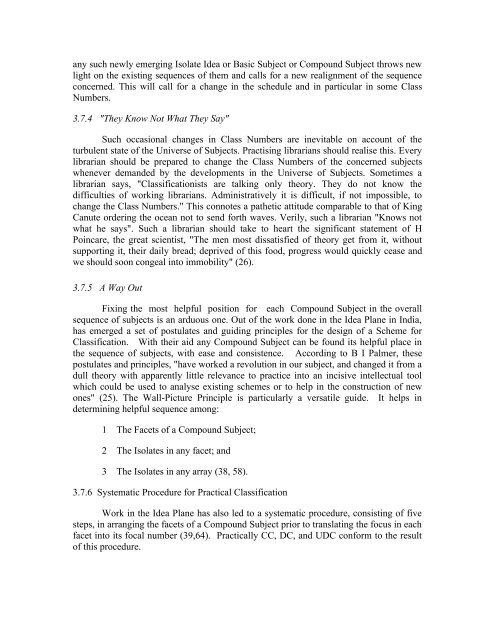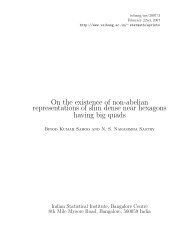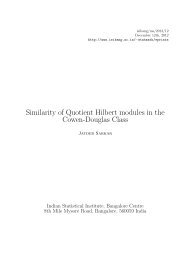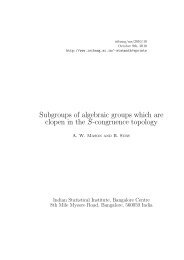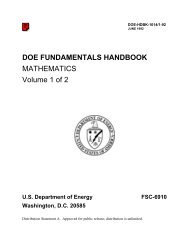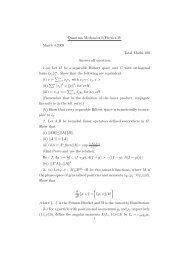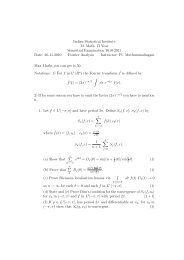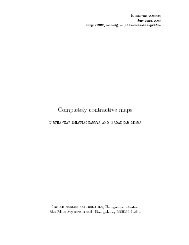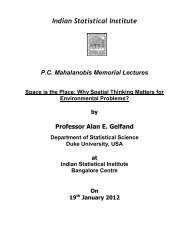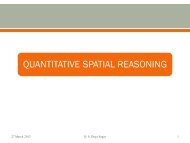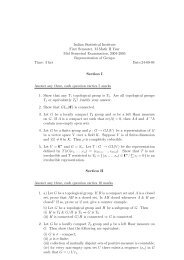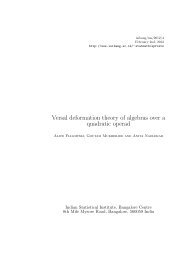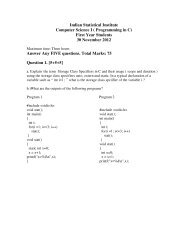CHOICE OF SCHEME FOR CLASSIFICATION - Indian Statistical ...
CHOICE OF SCHEME FOR CLASSIFICATION - Indian Statistical ...
CHOICE OF SCHEME FOR CLASSIFICATION - Indian Statistical ...
You also want an ePaper? Increase the reach of your titles
YUMPU automatically turns print PDFs into web optimized ePapers that Google loves.
any such newly emerging Isolate Idea or Basic Subject or Compound Subject throws new<br />
light on the existing sequences of them and calls for a new realignment of the sequence<br />
concerned. This will call for a change in the schedule and in particular in some Class<br />
Numbers.<br />
3.7.4 "They Know Not What They Say"<br />
Such occasional changes in Class Numbers are inevitable on account of the<br />
turbulent state of the Universe of Subjects. Practising librarians should realise this. Every<br />
librarian should be prepared to change the Class Numbers of the concerned subjects<br />
whenever demanded by the developments in the Universe of Subjects. Sometimes a<br />
librarian says, "Classificationists are talking only theory. They do not know the<br />
difficulties of working librarians. Administratively it is difficult, if not impossible, to<br />
change the Class Numbers." This connotes a pathetic attitude comparable to that of King<br />
Canute ordering the ocean not to send forth waves. Verily, such a librarian "Knows not<br />
what he says". Such a librarian should take to heart the significant statement of H<br />
Poincare, the great scientist, "The men most dissatisfied of theory get from it, without<br />
supporting it, their daily bread; deprived of this food, progress would quickly cease and<br />
we should soon congeal into immobility" (26).<br />
3.7.5 A Way Out<br />
Fixing the most helpful position for each Compound Subject in the overall<br />
sequence of subjects is an arduous one. Out of the work done in the Idea Plane in India,<br />
has emerged a set of postulates and guiding principles for the design of a Scheme for<br />
Classification. With their aid any Compound Subject can be found its helpful place in<br />
the sequence of subjects, with ease and consistence. According to B I Palmer, these<br />
postulates and principles, "have worked a revolution in our subject, and changed it from a<br />
dull theory with apparently little relevance to practice into an incisive intellectual tool<br />
which could be used to analyse existing schemes or to help in the construction of new<br />
ones" (25). The Wall-Picture Principle is particularly a versatile guide. It helps in<br />
determining helpful sequence among:<br />
1 The Facets of a Compound Subject;<br />
2 The Isolates in any facet; and<br />
3 The Isolates in any array (38, 58).<br />
3.7.6 Systematic Procedure for Practical Classification<br />
Work in the Idea Plane has also led to a systematic procedure, consisting of five<br />
steps, in arranging the facets of a Compound Subject prior to translating the focus in each<br />
facet into its focal number (39,64). Practically CC, DC, and UDC conform to the result<br />
of this procedure.


